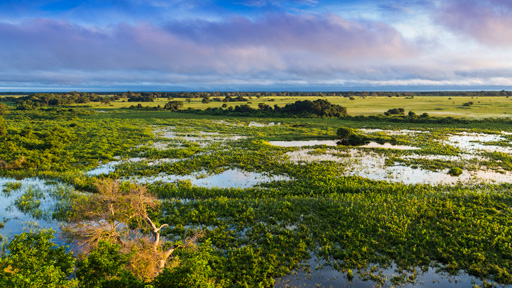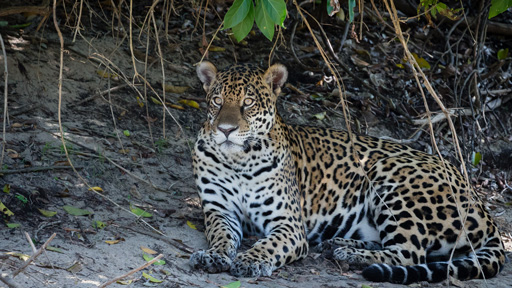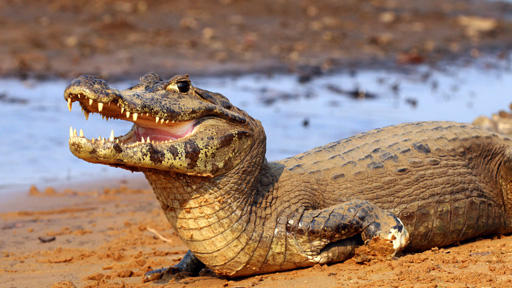
Human activities have threatened jaguars for decades, drastically reducing their original habitat across every continent where the animals appear. But in one region of South America, human intervention may actually be helping to save the largest jaguar on the planet.
Stretching through Brazil and parts of Paraguay and Bolivia, the Pantanal region is considered the world’s largest tropical wetland. The vast 70,000-square-mile network of waterways attracts the largest concentration of wildlife on the continent, rivaling the Amazon Rainforest for its biodiversity.

In addition to animals like anteaters, tapirs, capuchin monkeys and giant river otters, the Pantanal is home to one of the largest populations of jaguars in the world. In fact, the number of jaguars in the region has increased from around 400 animals in the 1990s to about 1,000 currently, according to CNN.

As a whole, jaguars are considered “near threatened” by the IUCN. Hunters and habitat fragmentation virtually wiped out the animals from the United States, where they are now almost extinct. And in South America, deforestation and conflicts with farmers — who kill them in retaliation for targeting their livestock — are the two biggest threats.
So why do jaguars appear to be thriving in the Pantanal?
For starters, there’s the abundance of prey, like caimans, capybaras, and deer, which basically form a walking buffet for the spotted predators. Jaguars enjoy a diverse diet, but caimans are one of their favorites, and around 10 million live in the region.

Another reason for the rebound is the growth of ecotourism.
Unlike the Amazon Rainforest, where dense foliage often obscures the view, the flat, open plains of the Pantanal make it a prime destination for tourists who want to spot jaguars and other exotic creatures up close. And, those visitors are actually willing to pay more to compensate local ranchers for the losses they face as a result of the jaguar, according to a study published in Perspectives in Ecology and Conservation.
In fact, the study conservatively estimated the value of jaguar-related tourism as nearly 60 times more than the cost of the damage to farmers annually, providing an incentive for locals to protect the species.
“What surprised us was the interest of tourists,” Fernando Tortato, a research fellow involved with the study told Mongabay News. “Tourists who visit the Pantanal in search of jaguar[s] are willing to pay for damages, and this reaches the root of the conflict, creating a pragmatic solution to the cattle losses of ranchers.”

Saving the jaguar has important benefits beyond the tourism dollars, however.
As an apex predator, the big cats play an important role in regulating the population of other species. Without predators like jaguars, other animals would reproduce unchecked, leading to overconsumption of plants, a greater risk of diseases being spread, and extreme competition that could cause weaker species to go die out. In other words, the jaguar is crucial for a balanced ecosystem.
During a journey through the Pantanal, one lucky tourist managed to capture some amazing footage of one of the largest jaguars ever filmed. Watch:




